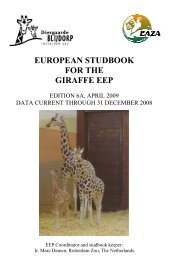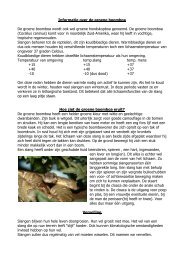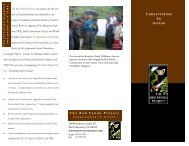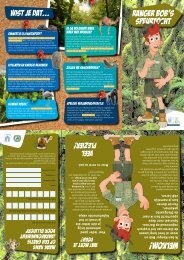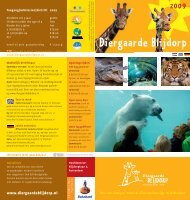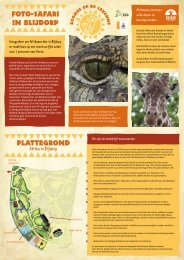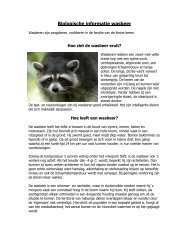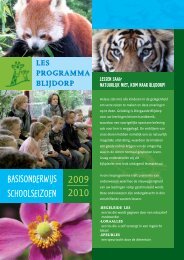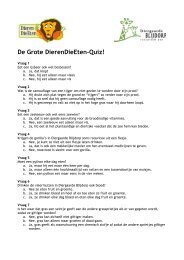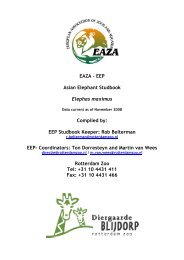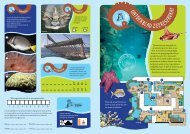Create successful ePaper yourself
Turn your PDF publications into a flip-book with our unique Google optimized e-Paper software.
<strong>EEP</strong> STUDBOOK CROWNED PIGEONS<br />
The Kovio used to trade shells along with bows and arrows to the Kurija in return for dog's<br />
teeth (a local valuable as well as a ceremonial display item) and pigs. They also had<br />
established trade relations with the Biaru, who had a similar appetite for the shells they<br />
controlled. The Kovio ability to control the shell trade in the Lakekamu Basin is reflected in<br />
their sweeping land claims. Their current position of political influence also seems to be a<br />
recapitulation of historical patterns in the basin (Kirsch, 1997).<br />
Their relation with the Mekeo and the location of their villages along the Lakekamu River<br />
have also given the Kovio greater access to urban resources. They are probably the best<br />
educated and dressed of the four groups in the basin. They are actively involved in local and<br />
regional politics and more "fully integrated into the cash economy" than their neighbours<br />
(Filer and Iamo, 1989). A lawyer from Okovai village who is working in Kerema has<br />
established a landowner association that claims to represent all of the Kovio, as well as<br />
members from other groups in the basin. Their interest in attracting large-scale resource<br />
development projects to the Lakekamu Basin may be the greatest obstacle to the successful<br />
implementation of the integrated conservation project planned by CI and the FSP-PNG<br />
(Kirsch, 1997). The urban orientation of the Kovio leadership may make them more willing to<br />
develop the natural resources of the Lakekamu Basin than the other residents of the basin,<br />
who depend upon the local environment for subsistence.<br />
Environmental history of the Lakekamu Basin<br />
The lowland resources of the Lakekamu Basin have been regularly exploited by the four<br />
cultural-linguistic groups who previously lived on its margins: the Biaru, the Kurija, the<br />
Kamea and the Kovio. The first three of these groups are segments of highland populations<br />
who moved into the basin to take advantage of lowland resources and exchange networks.<br />
The fourth group, the Kovio, are the only long-term residents of the lowlands. Due to their<br />
strategic position in the south of the basin and their close relations with the neighbouring<br />
Mekeo, the Kovio were able to dominate the shell trade from the coast into the mountains.<br />
They achieved this by forming exchange partnerships with the Biaru and Kurija, which were<br />
conduits for the shell trade to their mountain relatives. The Kamea remained resolutely<br />
outside of this regional exchange sphere, because they are widely feared by the other groups<br />
in the basin; against whom they sometimes staged raids and fought.<br />
Competing and overlapping claims complicates Land Rights in the Lakekamu Basin. Most of<br />
the northern half of the Basin was once an uninhabited buffer zone between the Kamea and<br />
the Biaru. Both groups exploited the resources of this area, but their hostile relations made<br />
settlement in lowlands too dangerous. The resulting protective zone for natural species has<br />
been eroded since 1972. However, when the government centre at Kakoro was established,<br />
the northern half of the basin subsequently became home to almost all of its inhabitants. The<br />
shifting horticulture of the basin dwellers has not affected as great an area as it might have,<br />
for their gardening is largely restricted to the fertile river floodplains, instead of spreading out<br />
through the adjacent forest land.<br />
The pattern of human occupation in the southern half of the basin is almost the reverse. It is<br />
not clear how long ago the Kurija migrated into the southeastern portion of the basin,<br />
although estimates ranges from several generations to several hundreds of years. The Kurija<br />
have asked archaeologists to survey the area in order to prove the antiquity of their claims.<br />
131



